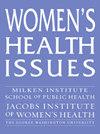残疾状况对避孕方法停药和避孕方法偏好的影响。
IF 2.5
2区 医学
Q2 PUBLIC, ENVIRONMENTAL & OCCUPATIONAL HEALTH
引用次数: 0
摘要
背景:向残疾人提供避孕护理必须在美国分层生殖和优生学的历史背景下进行。有记录表明,残疾人和非残疾人在接受计划生育服务和使用避孕方法方面存在严重的性健康和生殖健康不平等。很少有研究调查停止避孕或对避孕方法不满意对残疾人有何不同。目的:本研究评估残疾人和非残疾人在避孕欲望和体验方面的差异。方法:我们的样本包括2011-2019年全国家庭增长调查中自我认定的女性受访者。我们根据残疾自我报告检查了残疾和非残疾受访者之间的人口统计学和性健康和生殖健康差异。未调整和调整的逻辑回归模型估计了由于不满意和基于成本的方法选择而停止避孕方法的差异。结果:在过去12个月的生育能力和使用的避孕方法的报告中发现残疾状况的差异。在未调整和调整的模型中,残疾人比非残疾人报告说,由于不满意而停止使用他们的方法,并且如果成本不是问题,他们想使用不同的方法。结论:自我报告的残疾与避孕方法不满意和未满足的避孕偏好有关。需要努力调整以人为本的临床护理,以满足这一人群的生殖需求。本文章由计算机程序翻译,如有差异,请以英文原文为准。
Differences in Contraceptive Method Discontinuation and Contraceptive Method Preferences by Disability Status
Background
Contraceptive care delivery to people with disabilities must be contextualized within the U.S. history of stratified reproduction and eugenics. Significant sexual and reproductive health inequities have been documented between people with disabilities and those without disabilities in family planning service receipt and contraceptive method use. Little research has examined how discontinuation of contraception or dissatisfaction with contraceptive methods may differ for people with disabilities.
Objective
This study assesses differences in contraceptive desires and experiences between disabled and nondisabled individuals.
Methods
Our sample included self-identified female respondents from the 2011–2019 National Survey of Family Growth. We examined demographic and sexual and reproductive health differences between disabled and nondisabled respondents based on self-report of disabilities. Unadjusted and adjusted logistic regression models estimated differences in contraceptive method discontinuation due to dissatisfaction and method choice based on cost.
Results
Differences by disability status were found for reports of fecundity and the contraceptive method used in the past 12 months. In both unadjusted and adjusted models, significantly more disabled people than nondisabled people reported having discontinued their method because of dissatisfaction and having wanted to use a different method if cost were not an issue.
Conclusions
Self-reported disabilities are associated with contraceptive method dissatisfaction and unmet contraceptive preferences. Efforts are needed to tailor person-centered clinical care that is responsive to this population's reproductive wants and needs.
求助全文
通过发布文献求助,成功后即可免费获取论文全文。
去求助
来源期刊

Womens Health Issues
Multiple-
CiteScore
4.50
自引率
6.20%
发文量
97
审稿时长
32 days
期刊介绍:
Women"s Health Issues (WHI) is a peer-reviewed, bimonthly, multidisciplinary journal that publishes research and review manuscripts related to women"s health care and policy. As the official journal of the Jacobs Institute of Women"s Health, it is dedicated to improving the health and health care of all women throughout the lifespan and in diverse communities. The journal seeks to inform health services researchers, health care and public health professionals, social scientists, policymakers, and others concerned with women"s health.
 求助内容:
求助内容: 应助结果提醒方式:
应助结果提醒方式:


